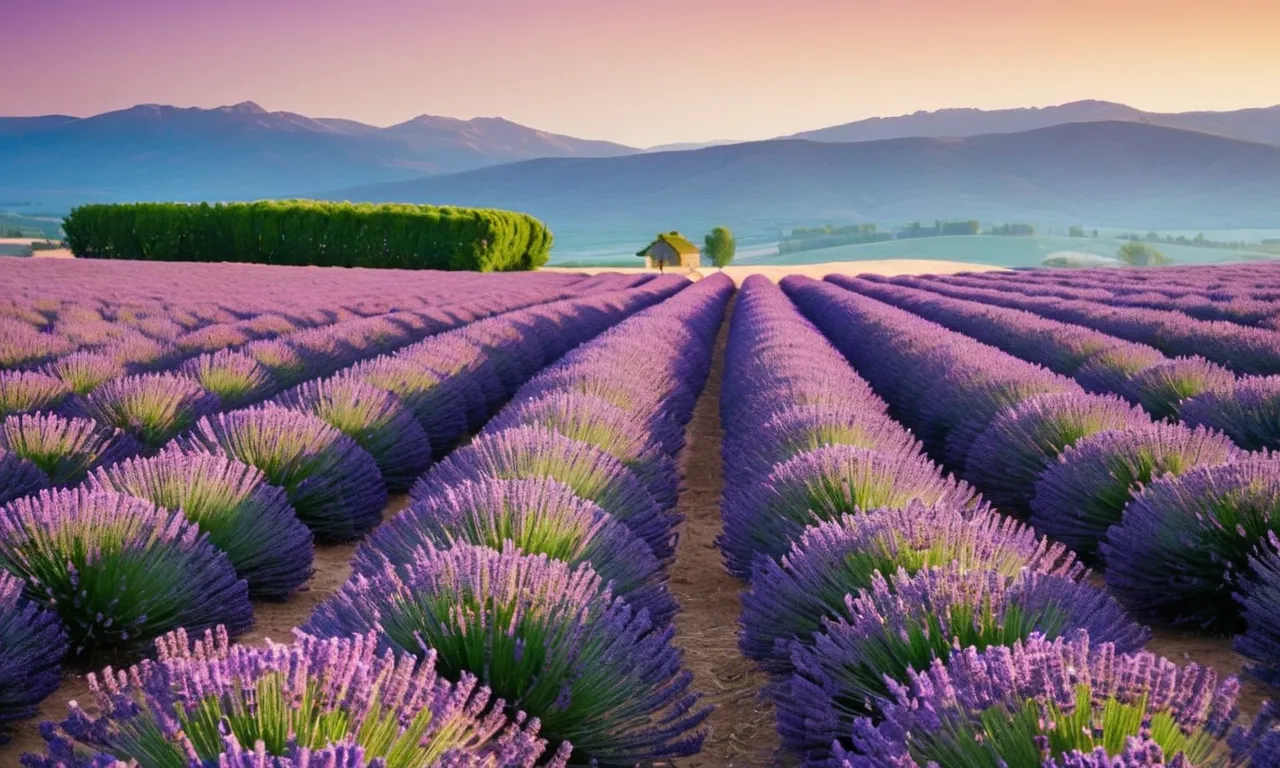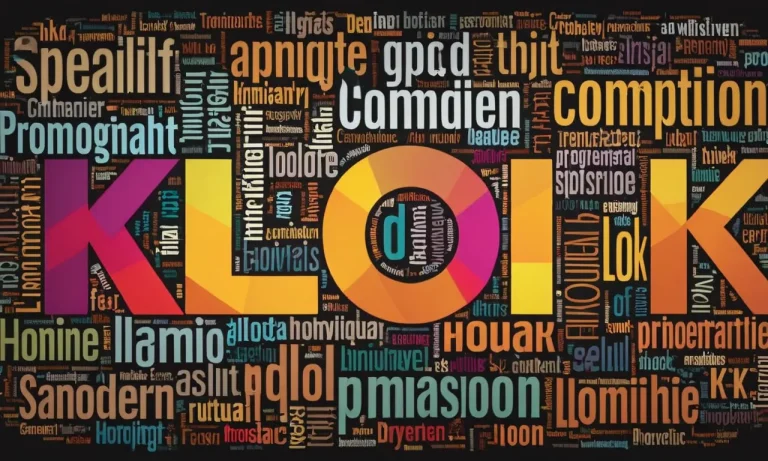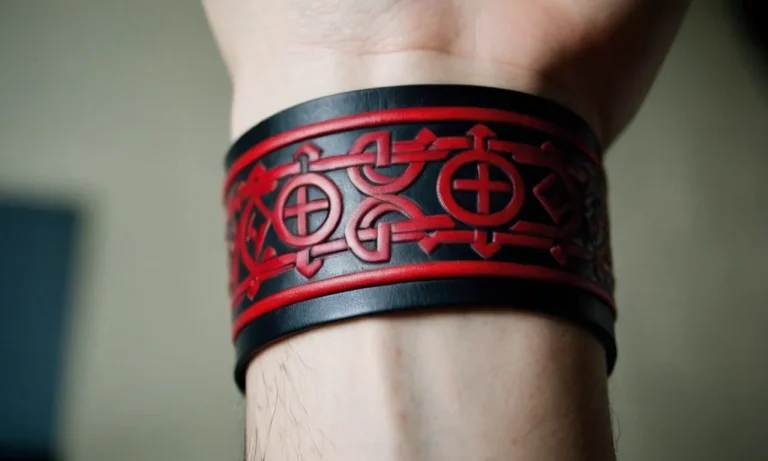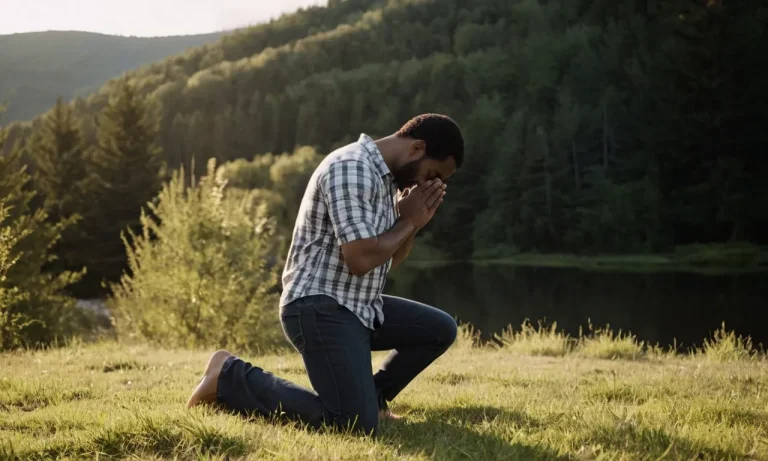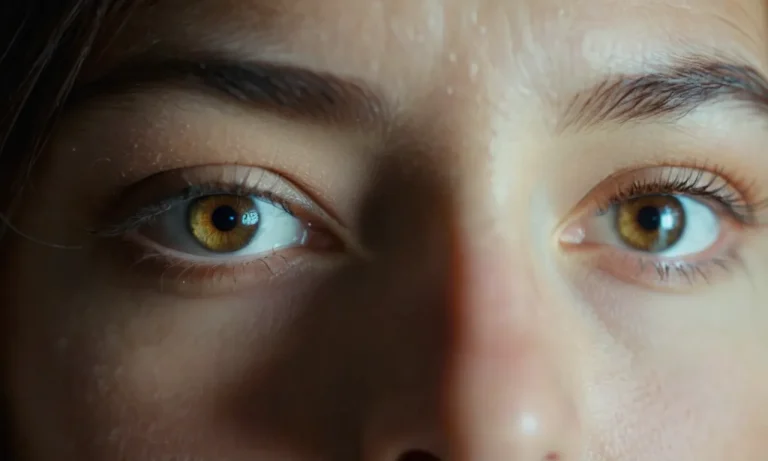The Profound Meaning And Symbolism Of The Color Purple
In the vast tapestry of colors that adorn our world, few hues carry as much depth and intrigue as the enigmatic purple. This regal shade has captivated humanity for centuries, weaving its way through art, literature, and cultural traditions, each thread revealing a tapestry of symbolism and meaning.
If you’re short on time, here’s a quick answer to your question: The color purple is associated with royalty, luxury, spirituality, and creativity. It is a blend of the stability of blue and the energy of red, representing a balance of calm and passion.
In this comprehensive article, we will delve into the rich history and symbolism of the color purple, exploring its cultural significance, psychological associations, and its impact on various aspects of our lives.
From ancient civilizations to modern-day trends, we will unravel the fascinating stories and interpretations that have made this hue a true masterpiece of color.
The Regal Heritage of Purple
The Tyrian Purple: A Dye Fit for Kings
In the ancient world, the deep, rich hue of Tyrian purple was a color reserved for royalty and the elite. This coveted dye was extracted from the hypobranchial gland of thousands of predatory sea snails found in the Mediterranean region, making it an incredibly labor-intensive and costly process.
According to ancient.eu, it took approximately 12,000 mollusks to yield just 1.5 grams of pure Tyrian purple dye, a staggering amount that underscored its exclusivity and prestige.
Purple in Ancient Civilizations
The allure of purple transcended cultures and civilizations, becoming a symbol of power, wealth, and status. In ancient Egypt, the color was associated with royalty and the gods, adorning the garments of pharaohs and the interiors of sacred temples.
The Phoenicians, renowned for their mastery of the Tyrian purple dye, established a thriving trade network, exporting the precious pigment to neighboring civilizations. The ancient Greeks and Romans, recognizing the rarity and beauty of purple, reserved it for their emperors and high-ranking officials, solidifying its regal connotations.
The Byzantine Empire and the Significance of Purple
The Byzantine Empire carried on the legacy of purple’s imperial associations, with the color becoming an integral part of its visual identity. The term “porphyrogenitus” (born in the purple) referred to children born to reigning Byzantine emperors, symbolizing their divine right to rule.
The iconic Byzantine double-headed eagle, a symbol of imperial power, was often depicted in shades of purple, further reinforcing the color’s symbolic weight. According to The Metropolitan Museum of Art, the production and use of purple dye were strictly regulated, with only the emperor and a select few officials permitted to wear it, solidifying its exclusivity and prestige. 😍
Through the ages, the color purple has transcended mere pigment, becoming a potent symbol of royalty, power, and luxury. Its regal heritage, deeply rooted in ancient civilizations, continues to captivate and inspire, reminding us of the enduring allure of this enigmatic hue. 👏
Spiritual and Religious Symbolism
Purple in Christianity and Catholicism
In the Christian tradition, purple holds a profound spiritual significance. It is often associated with royalty, wealth, and nobility, symbolizing the majesty and sovereignty of Christ as the King of Kings.
During Lent and Advent, the liturgical color purple is prominently used in churches to signify a period of penance, repentance, and spiritual preparation. The deep, rich hue is believed to represent the pain and suffering endured by Jesus Christ during his crucifixion.
According to Catholic Education, purple vestments worn by priests and bishops during these seasons serve as a reminder of the need for humility and self-reflection.
The Mystical Meaning of Purple in Hinduism
In Hinduism, the color purple is steeped in mysticism and spiritual enlightenment. It is closely associated with the seventh chakra, or the crown chakra, which represents the highest level of consciousness and divine connection.
According to Yoga Journal, purple is believed to promote inner peace, wisdom, and spiritual transformation. Many Hindu deities, such as Lord Krishna and Goddess Radha, are often depicted wearing purple garments, symbolizing their divine love and devotion.
Additionally, the use of purple in Hindu rituals and ceremonies is said to invoke a sense of transcendence and connection with the divine.
Purple in Buddhism and Zen Traditions
In Buddhism and Zen traditions, the color purple is revered for its association with spirituality and the pursuit of enlightenment. According to BuddhistDoor, purple represents the highest level of spiritual attainment and the ability to transcend the material world.
It is often used in Buddhist art and architecture, adorning the robes of monks and the interiors of temples. The combination of red and blue, which creates the color purple, is believed to symbolize the balance between passion and serenity, a state that is essential for achieving inner peace and enlightenment.
In Zen traditions, purple is also associated with creativity, intuition, and the cultivation of a meditative mind.
Across various spiritual and religious traditions, the color purple holds a profound and multifaceted symbolism. From representing the divine majesty of Christ to embodying the mystical pursuit of enlightenment in Hinduism and Buddhism, this regal hue serves as a powerful reminder of the depths of human spirituality and the universal yearning for a connection with the divine.
Its rich and captivating presence in sacred spaces and rituals continues to inspire awe and reverence, transcending cultural boundaries and uniting humanity in its quest for spiritual fulfillment.
Psychological and Emotional Associations
The Calming and Luxurious Effect of Purple
Purple has long been associated with royalty, luxury, and a sense of calm. According to color psychology, this rich hue is known for its ability to soothe and relax the mind. It’s no wonder that many spas and wellness centers incorporate shades of purple into their decor – it creates an atmosphere of tranquility and serenity.
In fact, a study by the University of British Columbia found that exposure to the color purple can have a calming effect on the brain, reducing stress levels and promoting relaxation. 😊
Purple and Creativity: Unleashing the Artistic Mind
While purple is often associated with calmness, it also has a strong connection to creativity and imagination. According to color experts, purple stimulates the right side of the brain, which is responsible for creative thinking and artistic expression.
This is why many artists and writers have been drawn to this hue throughout history. In fact, did you know that the famous artist Pablo Picasso had a “purple period” in his career? 🎨 It’s no surprise that purple is a popular color choice for creative spaces, such as art studios and design offices.
The Duality of Purple: Balancing Passion and Serenity
Purple is a unique color that embodies both passion and serenity. On one hand, it is associated with luxury and indulgence, representing wealth, power, and ambition. On the other hand, it has a calming and spiritual quality, often linked to mindfulness and inner peace.
This duality is what makes purple so intriguing and captivating. It’s a color that can evoke strong emotions, yet also provide a sense of balance and harmony. According to a study by ColorCom, over 75% of people surveyed associate purple with creativity, imagination, and spirituality. Whether you’re drawn to its regal or mystical qualities, purple is a color that truly resonates with the human psyche.
So, the next time you surround yourself with shades of purple, take a moment to appreciate its profound meaning and symbolism. From calming your mind to sparking your creativity, this captivating color has the power to evoke a range of emotions and associations. 👏
Purple in Art and Literature
The Symbolism of Purple in Paintings and Sculptures
Throughout history, the color purple has held a profound and multifaceted symbolism in the realm of art. From ancient civilizations to modern masterpieces, artists have employed this regal hue to convey a wide range of meanings and emotions.
In paintings, purple often represents power, nobility, and spirituality. The deep, rich tones evoke a sense of luxury and opulence, making it a favorite among royalty and aristocracy. One notable example is the famous Mona Lisa by Leonardo da Vinci, where the subject’s purple robe symbolizes her elevated social status and dignity.
In sculptures, purple has been used to depict divine or sacred figures, as well as to convey mysticism and transcendence. For instance, the Amitabha Buddha sculpture at the Metropolitan Museum of Art features a purple robe, representing the Buddha’s enlightenment and spiritual attainment.
According to a study by the Getty Research Institute, the use of purple in religious art has been prevalent across various cultures, from Byzantine mosaics to Hindu deities.
Literary Works and the Significance of Purple
In literature, the color purple has been a recurring motif, imbued with deep symbolism and metaphorical significance. One of the most iconic works exploring this theme is The Color Purple by Alice Walker, a Pulitzer Prize-winning novel that delves into the struggles and resilience of African American women.
In this masterpiece, purple represents the journey of self-discovery, empowerment, and the reclamation of one’s identity. Walker’s vivid descriptions of the color evoke a sense of spirituality, healing, and the beauty that can be found in the midst of adversity.
Beyond this iconic work, purple has been woven into countless other literary pieces, from poetry to plays. For example, in the Song of Myself by Walt Whitman, the poet employs the color purple to symbolize the grandeur and majesty of nature, celebrating the interconnectedness of all living beings.
In Shakespeare’s The Tempest, the character Prospero’s purple robe represents his magical powers and authority over the island.
Purple in Fashion and Design
In the world of fashion and design, purple has long been associated with luxury, creativity, and individuality. From haute couture runways to interior design trends, this captivating hue has left an indelible mark.
According to a report by Pantone, the color “Very Peri” (a periwinkle blue with a vivid red-violet undertone) was named the Color of the Year for 2022, reflecting the desire for creativity, curiosity, and embracing the unknown.
In the realm of fashion, designers have embraced purple in all its shades, from deep eggplant to vibrant lavender. 😍 Iconic fashion houses like Dior and Gucci have incorporated purple into their collections, creating stunning garments that exude sophistication and individuality.
Interior designers have also harnessed the power of purple, using it to create calming and luxurious spaces that inspire creativity and relaxation. According to a study by the Color Matters Institute, the color purple can have a positive impact on mental well-being and promote a sense of tranquility.
Modern-Day Interpretations and Trends
Purple in Branding and Marketing
In the realm of branding and marketing, the color purple has carved out a distinct niche for itself. This regal hue is often associated with luxury, creativity, and sophistication, making it a popular choice for companies seeking to convey a sense of exclusivity and elegance.
According to a study by Color Marketing Group, 49% of consumers expect purple-branded products to be of high quality, with 37% perceiving them as superior and 35% as prestigious.
Brands like Cadbury, Hallmark, and Yahoo! have long embraced the power of purple, using it as a central element in their visual identities. Interestingly, a Forbes article reveals that purple is a favorite color for wealthy consumers, with 76% of respondents earning over $100,000 annually preferring it.
This insight has prompted many luxury brands, such as Asprey and Amethyst, to incorporate shades of purple into their branding strategies. Can you imagine a world without the iconic Cadbury purple? 😲
The Influence of Purple in Interior Design
Purple has made a significant impact on the world of interior design, with its ability to evoke a sense of luxury, creativity, and tranquility. According to HGTV, purple is often associated with royalty, spirituality, and imagination, making it a popular choice for creating calming and inspiring spaces.
In recent years, interior designers have embraced various shades of purple, from deep eggplant to soft lavender, to create stunning and unique environments. A survey by Benjamin Moore found that 62% of homeowners are more likely to incorporate purple into their interiors, with 38% considering it a trendy and stylish choice.
Wouldn’t it be amazing to have a cozy reading nook or a luxurious bedroom adorned with rich purple accents? 😍
Purple in Pop Culture and Media
Purple has made its mark in popular culture and media, often symbolizing creativity, individuality, and artistic expression. From music icons like Prince, who famously adopted the “Purple Rain” moniker, to the iconic “Joker” character from the Batman universe, purple has become a symbol of counterculture and rebellion.
In the world of film and television, purple has been used to convey a sense of mystery, intrigue, and even villainy. Remember the unforgettable purple-hued scenes in the Matrix trilogy, which added an otherworldly and enigmatic atmosphere to the films?
Or the iconic purple suit worn by the Joker in the 2008 film “The Dark Knight,” which perfectly captured the character’s chaotic and unpredictable nature? These visual representations have cemented purple’s place in pop culture as a color that defies convention and challenges societal norms.
In the world of music, artists like Prince, Deep Purple, and Jimi Hendrix have embraced the color purple as a symbol of their artistic expression and individuality. Can you imagine a world without Prince’s iconic “Purple Rain” album or Deep Purple’s legendary hit “Smoke on the Water”?
The influence of purple in music has been profound, inspiring generations of artists to embrace their unique identities and push the boundaries of creativity.
Conclusion
The color purple, with its rich history and profound symbolism, has left an indelible mark on human culture and expression. From the regal halls of ancient civilizations to the modern-day realms of art, design, and popular culture, this hue has captivated and inspired generations.
As we have explored, the meaning of purple transcends mere aesthetics, delving into the realms of spirituality, psychology, and emotional expression. Its association with royalty, luxury, and creativity has made it a symbol of power, wisdom, and artistic expression.
Whether adorning the walls of sacred spaces or gracing the canvases of masterpieces, the color purple continues to weave its magic, inviting us to explore the depths of its symbolism and embrace the balance it represents between passion and serenity, energy and calm.
As we move forward, this enigmatic hue will undoubtedly continue to inspire and captivate, reminding us of the profound beauty and meaning that colors can hold.

